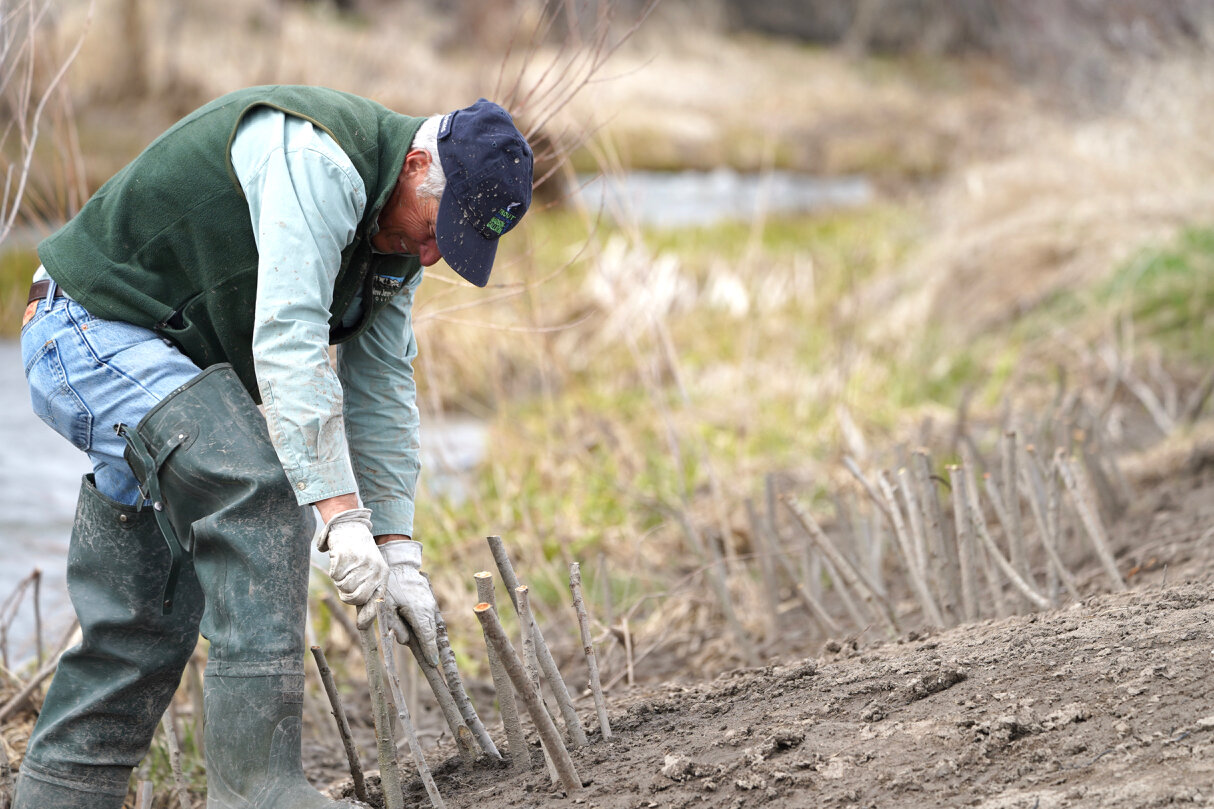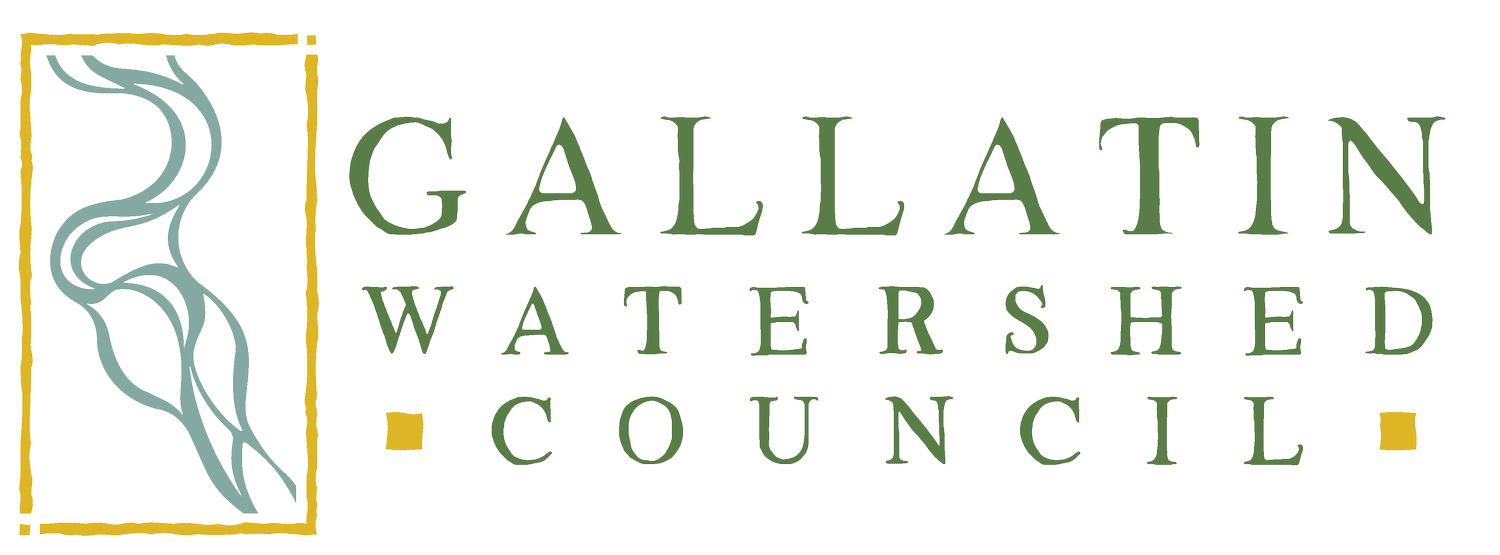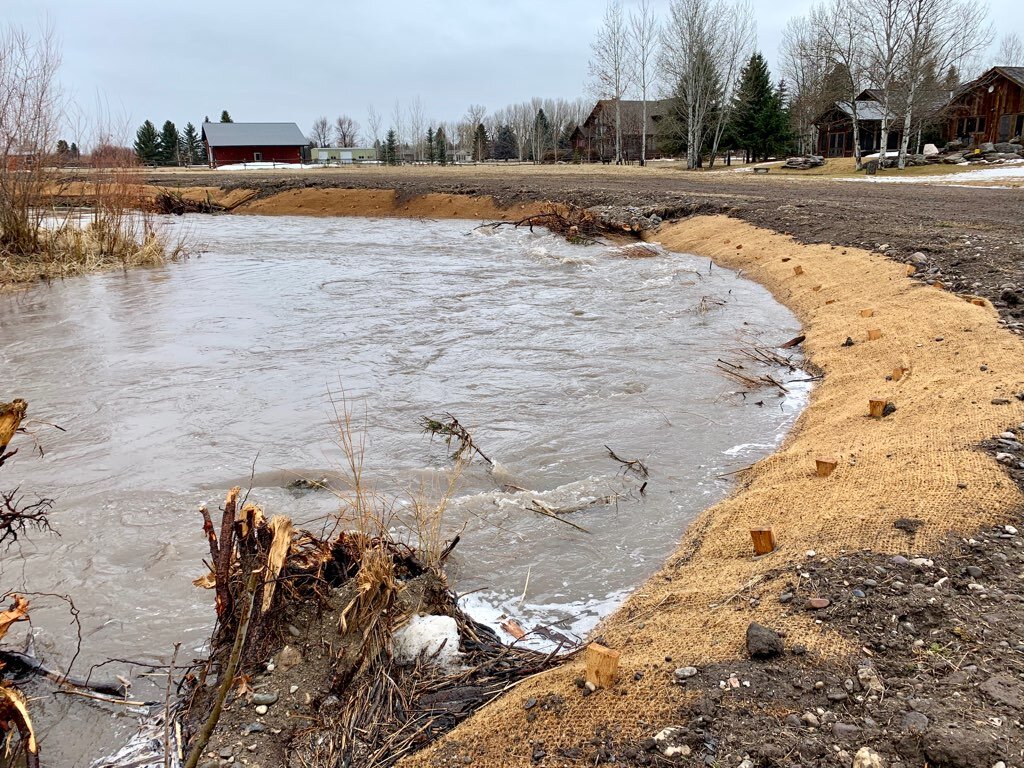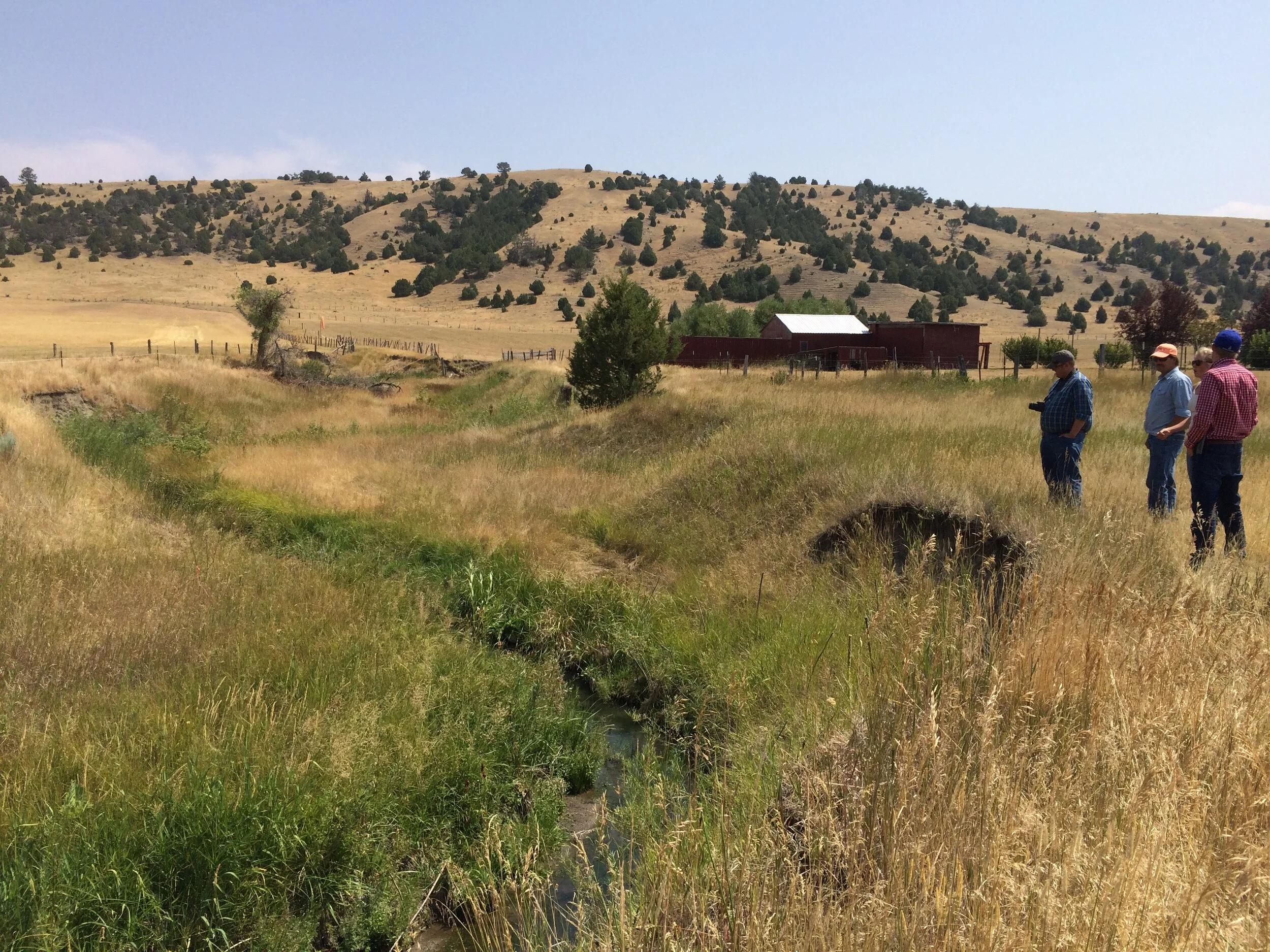
Restoration Projects
The Watershed Approach
The Gallatin Watershed Council is working with landowners and partner organizations throughout the Gallatin Valley to improve stream health and water quality.
Community-Based Stream Improvement is:
Based on the community’s priorities for water use
Aimed at improving water quality and stream health
Implemented with the voluntary participation of landowners and stakeholders
Achieved through on-the-ground projects, education, and
discussions about long-term watershed health
The Lower Gallatin Watershed
Restoration Plan
In 2014, the Gallatin Watershed Council worked with residents of the Gallatin Valley to create the Lower Gallatin Watershed Restoration Plan (WRP). This document identifies the community’s priorities for watershed health and identifies 33 potential projects to improve area streams and water quality.
Now that the plan is approved by the Montana Department of Environmental Quality, GWC and other local organizations are eligible to apply for 319 grant funding from the Environmental Protection Agency to implement water quality improvement projects throughout the Lower Gallatin Watershed.
GWC is currently in the process of updating the 2014 WRP. Read more here.
RECENT PROJECTS
Branch Out Bozeman
Bozeman’s Urban Tree Canopy Initiative
The Gallatin Watershed Council (GWC) and the City of Bozeman Forestry Division developed a partnership in 2021, and created the Adopt-a-Blvd program. This program focused on planting trees in a low-income neighborhood that consists mainly of renters. This program, along with additional joint planting events, led to an interest from both parties to continue planting trees together and to scale up our efforts to provide a healthy and resilient forest for the community at large. In late summer 2021, GWC received a technical grant from the National Park Service Rivers Trails and Conservation Assistance Program to help harness the momentum from the successful planting projects into a formal city wide initiative.
Low Tech Process Based Restoration
Kelly Creek, Montana
In October 2021, GWC installed 9 low-tech structures in the form of Beaver Dam Analogues and Post Assisted Log Strucutres (PALS) along Kelly Creek, a tributary of the East Gallatin River. This project aimed to encourage the repopulation of beavers upstream, enhance water retention and nutrient treatment, as well as increase biodiversity and floodplain connectivity within this particular reach of the river. Read about GWC’s first Low Tech Process Based Restoration (LTPBR) project , and why we hope to see more of this low tech restoration within the Lower Gallatin Watershed.
Fire Fuels Reduction
The Bridger Foothills Fire in September 2020 had a significant impact on our community. The immediate and amazing responses from first responders, firefighters, smokejumpers and volunteers highlight the resilience of this community that we’re proud to be a part of. Generous donations to the Bridger Foothills Fire Relief Fund helped to provide immediate assistance such as food, shelter and emotional support for those that lost their homes as a result of the fire. In late 2020, GWC was granted $60,000 from the Bridger Foothills Fire Relief Fund to assist landowners in implementing postfire resource conservation best management practices. These funds will go a long way in rehabilitating areas that are most susceptible to erosion, sediment loading and weed infestation.
East Gallatin Preserve Restoration Project
In 2020, GWC helped to restore two vulnerable sections of streambank located on the East Gallatin Preserve Property, a parcel directly downstream of our 2018 East Gallatin project.
The restoration project at the East Gallatin Preserve prevented the East Gallatin from breaking from its existing channel – safeguarding the current meanders to reduce the stream’s speed, resulting in less sediment and nutrient eroding into the stream itself. In addition to active restoration, the project emphasizes the importance of engaged landowners and collaborative approaches to watershed restoration.
This project is a partnership between a local landowner, Antler & Fin Restoration and the Gallatin Watershed Council. Thank you to the Montana Watershed Coordination Council’s Watershed Fund and Montana Department of Environmental Quality for supporting this project.
Dry Creek Restoration Project
Dry Creek was originally listed in 1992 as impaired for sediment due to channel realignment associated with transportation, reduced riparian vegetation, and siltation and streambank failure associated with agriculture. To achieve load reduction goals, the Lower Gallatin Watershed Restoration Plan completed by the Gallatin Watershed Council in 2014 recommended streambank stabilization and restoration of entrenched channel conditions, which was the intent of the Dry Creek Restoration Project.
During the fall of 2018 and early-winter of 2019, project partners including Trout Unlimited and the Gallatin Watershed Council restored a total of 5,595 feet of bankline along the project reach. An inset floodplain was created along the newly restored banklines. During the spring of 2019, riparian plantings were incorporated along this 1.85-mile reach of Dry Creek. Funding was provided in part by the Montana Department of Environmental Quality and the Montana Watershed Coordination Council’s Watershed Fund.
Upstream East Gallatin Restoration Project
The East Gallatin River has a long history of impacts from agriculture and urban development. With rapid conversion of land use from agriculture to small tracts and subdivisions, more people are building homes along streams without being aware of the natural tendency of rivers to migrate. Thus, more and more applications for bank stabilization permits are being submitted, generally involving riprap, especially in high water years. Riprap is generally oversized and excessive in streams the size of the East Gallatin River. GWC and project partners, Trout Unlimited and Fish, Wildlife and Parks, hoped that this project would help to demonstrate effectiveness of different techniques at halting bank erosion.
The project included construction of bank stabilization measures using native bioengineering and large woody debris techniques where possible and riprap repair in one discreet locations to ensure stability. Benefits of the project include reduction in fine sediment loading, added woody debris habitat, and added riparian vegetation. This project was a partnership between Trout Unlimited, Montana Fish, Wildlife and Parks, GWC and the private landowner. Funding was provided in part by the Montana Watershed Coordination Council’s Watershed Fund.
Camp Creek Restoration Project
The Camp Creek Restoration project was a collaboration between GWC, the Natural Resources Conservation Service (NRCS), and a private landowner who farms and grazes cattle near Camp Creek. The landowner is enrolled in NRCS' Conservation Stewardship Program (CSP) and wished to improve water quality, bank stabilization, and soil and animal health on his property. Goals achieved included an increase in riparian vegetation along Camp Creek, the construction of offsite watering facilities for livestock, the installation of fencing to facilitate a grazing system, woody plant establishment along Camp Creek and increased landowner and community awareness of impacts to water quality. Other major partners in the Camp Creek project included Gallatin County Extension, the Gallatin Conservation District, Montana State University and the Montana Department of Environmental Quality (MTDEQ).
Story Mill Community Park Restoration
Wetlands and floodplains provide important habitat for fish and wildlife and enhance water quality in rivers. As a part of this project, these features at Story Mill Park were restored so the site can again be what it was 150 years ago—a thriving habitat for plants, animals, water, and people. Project outcomes included:
Excavation and re-establishment of approximately one acre of floodplain adjacent to the East Gallatin River.
Revegetation of the restored floodplain and adjacent riparian area, including seeding with a native riparian or wetland seed mix of grasses, forbs, and shrubs, and planting of clusters of locally-sourced willow cuttings.
Creation of an erosion resistant public access point on the East Gallatin River
Planting of locally-sourced willow cutting clusters in the Bozeman Creek Slough.
The Story Mill Community Park project was a collaboration of many partners including the Trust for Public Land, Montana Fish, Wildlife and Parks, the Gallatin Watershed Council, the Gallatin Local Water Quality District, Trout Unlimited and Montana Department of Environmental Quality










